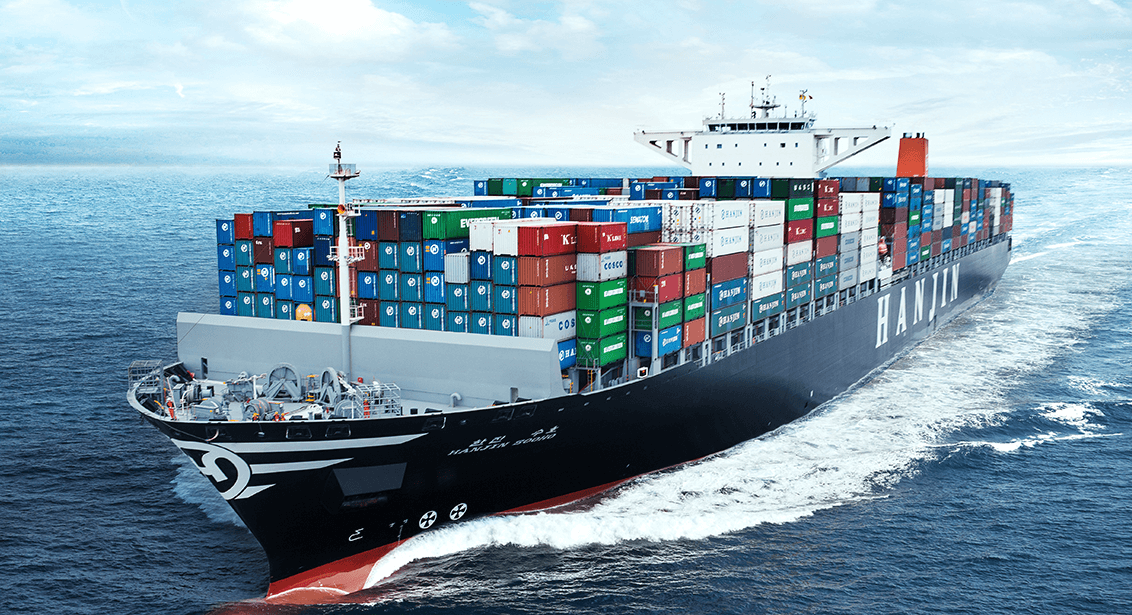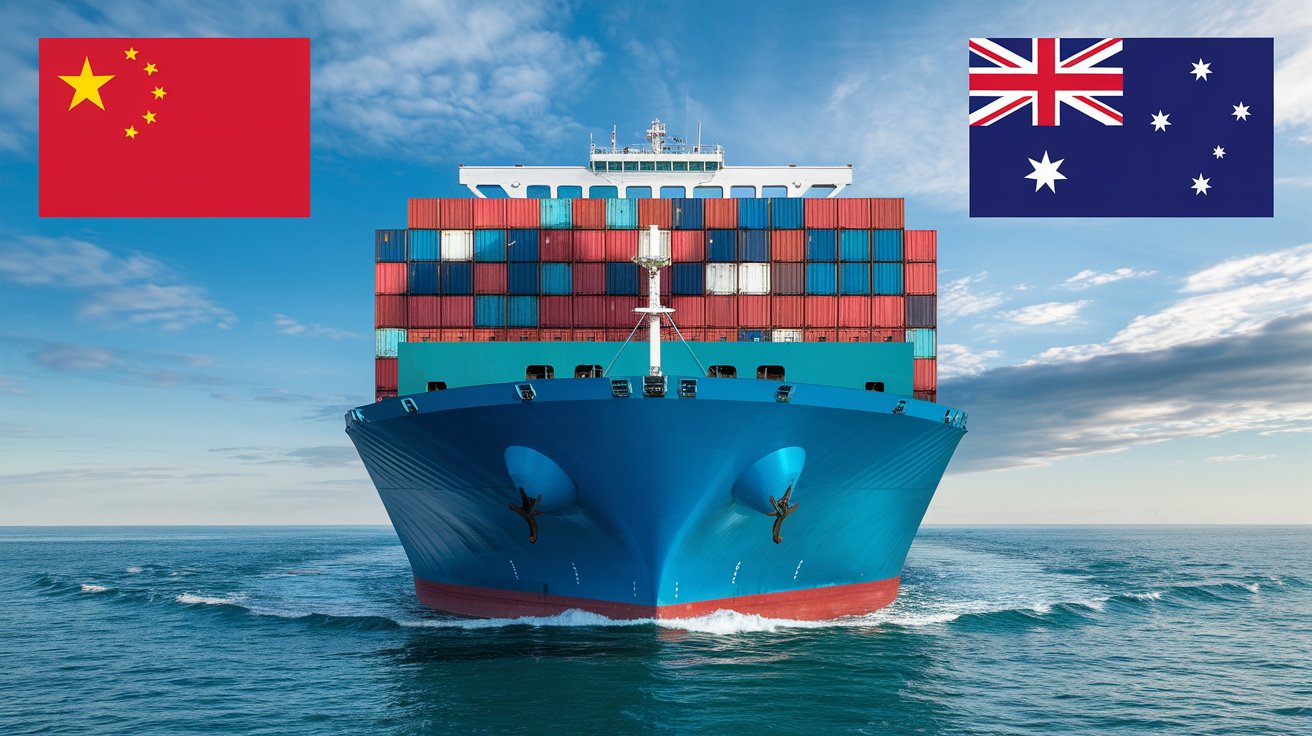I. Introduction to Shanghai’s Maritime Dominance
The Port of Shanghai, strategically positioned at the Yangtze River’s estuary, is a pivotal nexus in global maritime trade. This article explores its historical significance, technological advancements, and its indispensable role in the global economy.

A. Strategic Geographical Advantage
As a gateway to the East China Sea, the Port of Shanghai’s prime location facilitates unparalleled maritime connectivity, serving as a critical conduit for international trade.
B. Evolution of a Trade Powerhouse
The Port of Shanghai’s journey from a modest port to a global trade giant showcases a history marked by innovation, resilience, and strategic foresight.
C. Global Trade’s Central Hub
Playing a central role in international commerce, the Port of Shanghai is the orchestrator of global trade dynamics, linking manufacturers, consumers, and businesses across continents.
II. State-of-the-Art Port Infrastructure
A. Geographical Layout and Strategic Reach
Spanning the Yangtze River’s mouth, the Port of Shanghai’s layout is a testament to strategic planning, offering unparalleled access to major shipping lanes.
B. Specialized Terminals and Berths
Equipped with state-of-the-art terminals and berths, the port caters to a wide range of cargo types, ensuring the smooth transit of containers and bulk goods.
C. Cutting-Edge Logistics Technologies
The Port of Shanghai is a leader in logistics technology, integrating AI, automation, and data analytics to enhance operational efficiency.
III. The Port’s Role as a Global Trade Epicenter
A. Key Player in International Shipping Routes
With its strategic location, the Port of Shanghai is a cornerstone in major shipping routes, facilitating seamless trade between Asia, Europe, and the Americas.
B. World’s Busiest Container Port
As the world’s busiest container port, the Port of Shanghai sets the benchmark for throughput and efficiency, outperforming its global counterparts.
C. Economic Impact Through Trade Partnerships
The Port of Shanghai fosters robust trade partnerships, driving significant economic growth that echoes beyond its local sphere to the global stage.
IV. Shipping Operations and Vessel Traffic Management
A. Accommodating Diverse Vessel Fleets
The Port of Shanghai’s adaptability is evident in its ability to accommodate a wide range of vessel types and sizes, from colossal container ships to agile cargo vessels.
B. Streamlined Container Handling
The port’s efficient container handling processes are a hallmark of its operational excellence, ensuring rapid loading and unloading.
C. Advanced Navigation and Safety Protocols
Safety is paramount at the Port of Shanghai, where advanced navigation technologies and stringent safety measures are implemented to secure maritime operations.
V. Port Expansion and Technological Innovations
A. Future-Oriented Expansion Projects
The Port of Shanghai is engaged in ambitious expansion projects aimed at enhancing capacity, efficiency, and sustainability.
B. Pioneering Port Management Technologies
Innovative technologies such as AI, blockchain, and IoT are being harnessed to revolutionize port management practices.
C. Environmental Sustainability Initiatives
The Port of Shanghai is at the forefront of green initiatives, striving for eco-friendly operations and a reduced carbon footprint.
VI. Economic Contributions and Socio-Economic Impact
A. Economic Catalyst for Shanghai and China
The Port of Shanghai significantly contributes to the GDP, employment, and industrial growth of Shanghai and China.
B. Employment and Workforce Development
As a major employer, the port drives socio-economic development by fostering a dynamic and skilled workforce.
C. Integration with Diverse Economic Sectors
The Port of Shanghai acts as an economic integrator, interlinking with various industries to create a synergistic and thriving economic ecosystem.
VII. Addressing Challenges and Future-Proofing the Port
A. Managing Congestion and Shipping Traffic
The Port of Shanghai addresses the challenge of congestion through innovative solutions, ensuring smooth shipping traffic.
B. Environmental Stewardship and Sustainability
Balancing growth with environmental responsibility, the port leads in sustainability practices, aligning operations with ecological principles.
C. Leveraging Technology to Overcome Challenges
The Port of Shanghai uses technological innovations to streamline operations and enhance efficiency in the face of modern trade complexities.
VIII. Security, Compliance, and Regulatory Collaboration
A. Robust Security Measures
Security is a top priority at the Port of Shanghai, with robust measures in place to protect against threats and ensure smooth maritime commerce.
B. Adherence to International Shipping Regulations
The Port of Shanghai maintains high compliance standards with international shipping regulations, contributing to a secure and reliable global trade network.
C. Collaboration with Maritime Authorities
In partnership with maritime authorities, the Port of Shanghai fosters regulatory compliance and a harmonious maritime environment.
IX. Embracing the Digital Age in Port Operations
A. Smart Technology Integration
The Port of Shanghai integrates smart technologies to transform operations and set new efficiency benchmarks in the maritime industry.
B. Digital Platforms for Enhanced Visibility
Digital platforms for cargo tracking and management offer real-time visibility, a key component in modern logistics.
C. Data Analytics and Automation for Efficiency
Data analytics and automation are leveraged to enhance operational efficiency, optimizing processes for the digital age.
X. Cultural and Social Contributions
A. Impact on Local Community and Lifestyle
The Port of Shanghai shapes the local community and lifestyle, serving as a cultural and social influencer.
B. Cultural Exchanges and Diverse Influences
As a gateway for cultural exchange, the port fosters an environment where diverse cultures interact and converge.
C. Community Engagement and CSR Initiatives
The Port of Shanghai is committed to social responsibility, engaging with the community and contributing to social well-being and sustainable development.
Conclusion
A. The Port of Shanghai’s Global Trade Significance
The Port of Shanghai stands as a beacon in global trade, connecting nations and invigorating the world economy.
B. Anticipating Future Growth and Developments
The Port of Shanghai is poised for continued growth, with ongoing developments shaping the future of maritime commerce.
C. Recognizing the Port’s Maritime Industry Impact
Acknowledging its multifaceted impact, the Port of Shanghai exemplifies excellence, innovation, and resilience in the global maritime industry.





















 Afrikaans
Afrikaans Shqip
Shqip አማርኛ
አማርኛ العربية
العربية Հայերեն
Հայերեն Azərbaycan dili
Azərbaycan dili Euskara
Euskara Беларуская мова
Беларуская мова বাংলা
বাংলা Bosanski
Bosanski Български
Български Català
Català Cebuano
Cebuano Chichewa
Chichewa 简体中文
简体中文 繁體中文
繁體中文 Corsu
Corsu Hrvatski
Hrvatski Čeština
Čeština Dansk
Dansk Nederlands
Nederlands English
English Esperanto
Esperanto Eesti
Eesti Filipino
Filipino Suomi
Suomi Français
Français Galego
Galego ქართული
ქართული Deutsch
Deutsch Ελληνικά
Ελληνικά Kreyol ayisyen
Kreyol ayisyen Harshen Hausa
Harshen Hausa Ōlelo Hawaiʻi
Ōlelo Hawaiʻi עִבְרִית
עִבְרִית हिन्दी
हिन्दी Hmong
Hmong Magyar
Magyar Íslenska
Íslenska Igbo
Igbo Bahasa Indonesia
Bahasa Indonesia Gaeilge
Gaeilge Italiano
Italiano 日本語
日本語 Basa Jawa
Basa Jawa ಕನ್ನಡ
ಕನ್ನಡ Қазақ тілі
Қазақ тілі ភាសាខ្មែរ
ភាសាខ្មែរ 한국어
한국어 كوردی
كوردی Кыргызча
Кыргызча ພາສາລາວ
ພາສາລາວ Latin
Latin Latviešu valoda
Latviešu valoda Lietuvių kalba
Lietuvių kalba Lëtzebuergesch
Lëtzebuergesch Македонски јазик
Македонски јазик Malagasy
Malagasy Bahasa Melayu
Bahasa Melayu മലയാളം
മലയാളം Maltese
Maltese Te Reo Māori
Te Reo Māori मराठी
मराठी Монгол
Монгол ဗမာစာ
ဗမာစာ नेपाली
नेपाली Norsk bokmål
Norsk bokmål پښتو
پښتو فارسی
فارسی Polski
Polski Português
Português ਪੰਜਾਬੀ
ਪੰਜਾਬੀ Română
Română Русский
Русский Samoan
Samoan Gàidhlig
Gàidhlig Српски језик
Српски језик Sesotho
Sesotho Shona
Shona سنڌي
سنڌي සිංහල
සිංහල Slovenčina
Slovenčina Slovenščina
Slovenščina Afsoomaali
Afsoomaali Español
Español Basa Sunda
Basa Sunda Kiswahili
Kiswahili Svenska
Svenska Тоҷикӣ
Тоҷикӣ தமிழ்
தமிழ் తెలుగు
తెలుగు ไทย
ไทย Türkçe
Türkçe Українська
Українська اردو
اردو O‘zbekcha
O‘zbekcha Tiếng Việt
Tiếng Việt Cymraeg
Cymraeg יידיש
יידיש Yorùbá
Yorùbá Zulu
Zulu